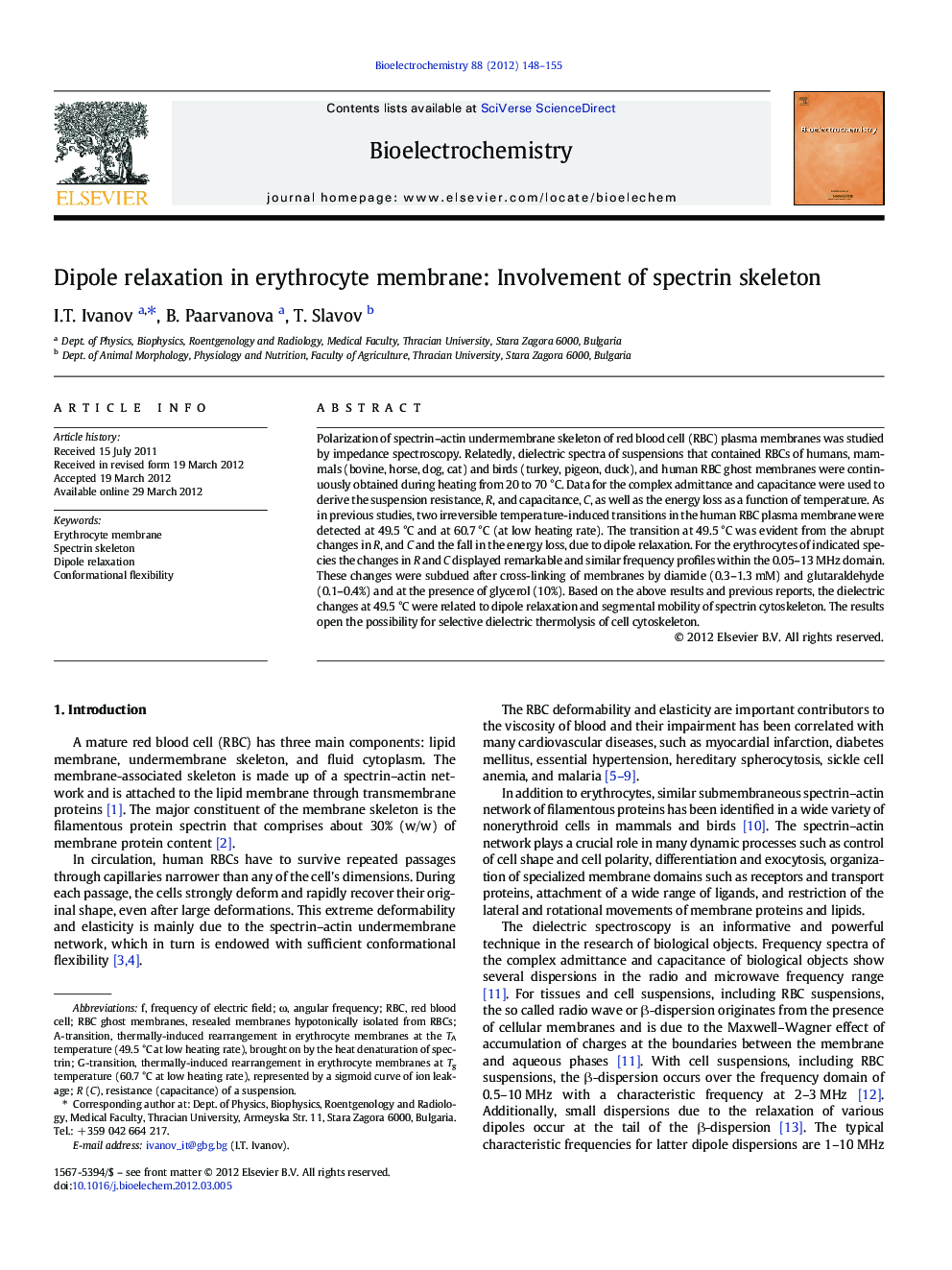| کد مقاله | کد نشریه | سال انتشار | مقاله انگلیسی | نسخه تمام متن |
|---|---|---|---|---|
| 1271742 | 1496924 | 2012 | 8 صفحه PDF | دانلود رایگان |

Polarization of spectrin–actin undermembrane skeleton of red blood cell (RBC) plasma membranes was studied by impedance spectroscopy. Relatedly, dielectric spectra of suspensions that contained RBCs of humans, mammals (bovine, horse, dog, cat) and birds (turkey, pigeon, duck), and human RBC ghost membranes were continuously obtained during heating from 20 to 70 °C. Data for the complex admittance and capacitance were used to derive the suspension resistance, R, and capacitance, C, as well as the energy loss as a function of temperature. As in previous studies, two irreversible temperature-induced transitions in the human RBC plasma membrane were detected at 49.5 °C and at 60.7 °C (at low heating rate). The transition at 49.5 °C was evident from the abrupt changes in R, and C and the fall in the energy loss, due to dipole relaxation. For the erythrocytes of indicated species the changes in R and C displayed remarkable and similar frequency profiles within the 0.05–13 MHz domain. These changes were subdued after cross-linking of membranes by diamide (0.3–1.3 mM) and glutaraldehyde (0.1–0.4%) and at the presence of glycerol (10%). Based on the above results and previous reports, the dielectric changes at 49.5 °C were related to dipole relaxation and segmental mobility of spectrin cytoskeleton. The results open the possibility for selective dielectric thermolysis of cell cytoskeleton.
► Erythrocyte membrane spectrin skeleton polarization was studied during heating.
► Polarization was sensed by the changes in suspension R and C at 49.5 °C.
► It was strongly affected by glycerol and by fixation with diamide and glutaraldehyde.
► The dipole relaxation occurred at 0.5–10 MHz.
► Results indicate that heat could be selectively deposited in the plasma membranes.
Journal: Bioelectrochemistry - Volume 88, December 2012, Pages 148–155